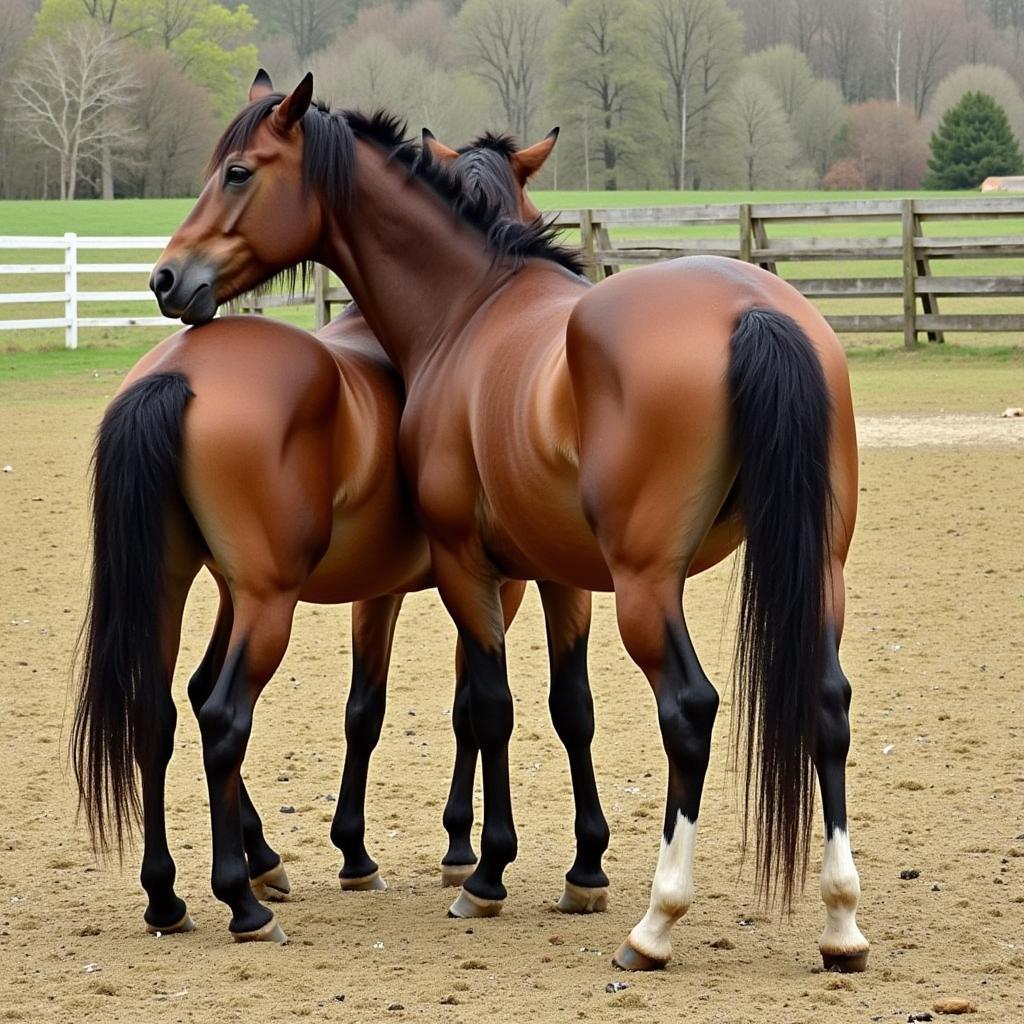The search term “Horse Rimjob” often appears in online queries, but its meaning and intent can be easily misinterpreted. It’s crucial to address this topic responsibly and provide accurate information to those who may encounter it, especially within the context of horse care and animal welfare. This article aims to clarify the term, discuss its potential misuse, and emphasize the importance of ethical treatment and responsible information-seeking regarding horses and all animals.
The Misconception Surrounding “Horse Rimjob”
The term “horse rimjob,” while sometimes used in a sexually suggestive context, often arises from genuine curiosity or misunderstanding about equine anatomy and behavior. It’s important to remember that animals, including horses, cannot consent to sexual activity, and any act of this nature is considered animal abuse. It’s our responsibility to protect their well-being and ensure they are treated with respect and kindness.
Equine Social Behaviors and Their Importance
Horses are social animals with complex communication patterns. They engage in various behaviors, such as mutual grooming, nuzzling, and play, to establish and maintain social bonds within their herd. These behaviors are essential for their physical and emotional well-being and should be understood within their natural context.
Mutual Grooming: A Natural Equine Interaction
Mutual grooming, where horses nibble or lick each other’s coats, serves several purposes. It helps to remove parasites, maintain hygiene, and strengthen social bonds. This behavior, often observed between horses standing head to tail, can be misinterpreted by those unfamiliar with equine interactions, leading to the use of inaccurate and potentially harmful search terms.
 Horses Engaging in Mutual Grooming
Horses Engaging in Mutual Grooming
Responsible Information Seeking and Animal Welfare
When researching animal behavior, it’s essential to use accurate and appropriate terminology. Misusing terms can perpetuate misinformation and potentially normalize harmful practices. Reliable sources of information about horse care and behavior include veterinary professionals, equine behaviorists, and reputable equestrian organizations.
Protecting Horses from Abuse and Exploitation
Promoting responsible horse ownership and raising awareness about animal welfare are crucial steps in preventing abuse and exploitation. Educating ourselves about proper horse care, recognizing signs of distress or neglect, and reporting suspected abuse are all essential actions we can take to protect these magnificent animals.
Conclusion: Prioritizing Ethical Treatment and Accurate Information
Understanding equine behavior and using accurate terminology are essential for responsible horse ownership and promoting animal welfare. By seeking information from reliable sources and advocating for ethical treatment, we can ensure the well-being of horses and all animals. The term “horse rimjob” often stems from a misunderstanding of natural equine behavior and should be replaced with appropriate terminology to foster accurate information and prevent the normalization of harmful practices.
FAQs
- What is mutual grooming in horses?
- Why is it important to use accurate terminology when researching animal behavior?
- Where can I find reliable information about horse care and behavior?
- What should I do if I suspect a horse is being abused or neglected?
- How can I promote responsible horse ownership and animal welfare?
- What are some common misconceptions about horse behavior?
- How can I learn more about equine social interactions?
For further assistance, please contact us: Phone: 0772127271, Email: [email protected], or visit our location: QGM2+WX2, Vị Trung, Vị Thuỷ, Hậu Giang, Việt Nam. We have a 24/7 customer support team.